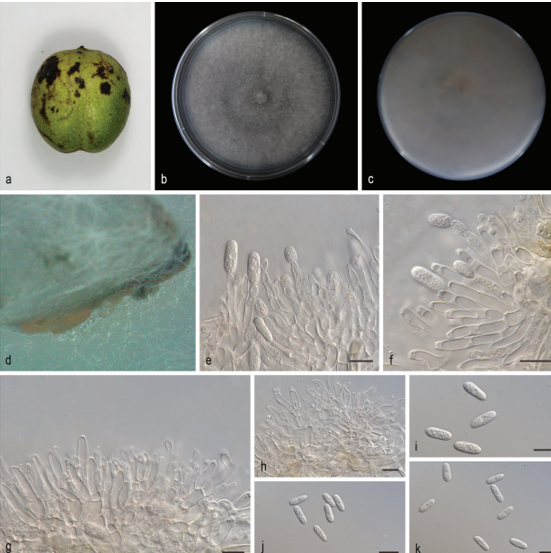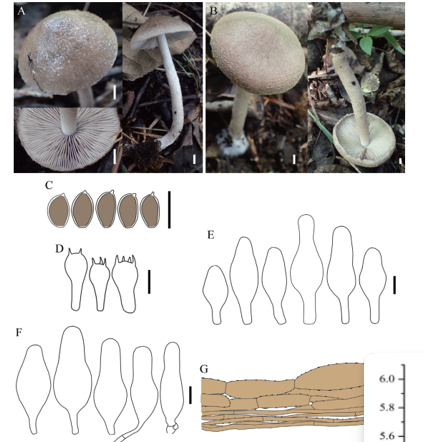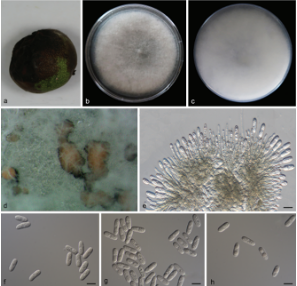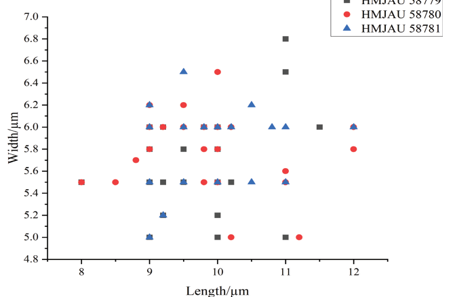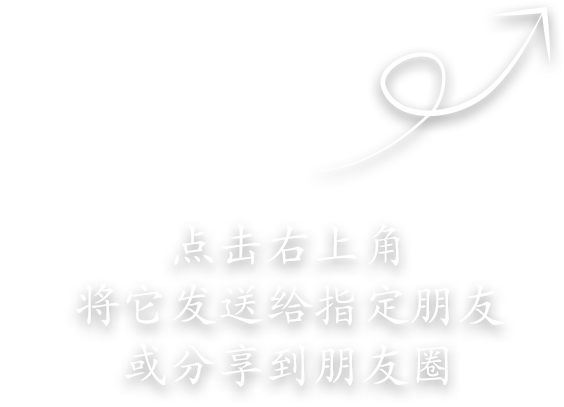Phlebia tongxiniana C.L. Zhao 2020
MycoBank MB 834292
Holotype: China. Yunnan Province, Yuxi, Xinping County, Mopanshan National Forest Park, E 101°31′, N 23°42′, alt. 2650 m, on decayed trunk of Quercus, leg. C.L. Zhao, 19 Aug 2017, CLZhao 2255 (SWFC).
Morphological description
Fruiting body. Basidiomata annual, effused, ceraceous, without odour or taste when fresh, becoming membranaceous upon drying, up to 15 cm long, 100– 200 μm thick. Hymenophore smooth, buff when fresh, buff to cinnamon-buff upon drying. Sterile margin narrow, buff.
Hyphal structure. Monomitic; hyphae clamped, colourless, thin-walled, IKI–, CB–; tissues unchanged in KOH. Subicular hyphae richly branched, 3–5.5 μm in diam.; subhymenial hyphae barely branched, 2–4 μm in diam.
Hymenium. Cystidia absent; fusoid cystidioles present, colourless, thin-walled, 13–18.5 × 1.5–2.8 μm; basidia clavate, with four sterigmata and a basal clamp connection, 9.5–18.5 × 3.5–5.5 μm. Basidiospores ellipsoid, colourless, thin-walled, smooth, often with 1–3 oildrops, IKI–, CB–, (4–)4.5–5(−5.5) × 2.8–3.5 μm, L = 4.77 μm, W = 3.19 μm, Q = 1.47–1.55 (n = 300/10); in holotype 4.22–5.08 × 2.57–3.38 μm, L = 4.76 μm, W = 3.07 μm, Q = 1.55 (n = 30/1).
Habitat: On decayed trunk of Quercus.
Distribution: In Yunnan Province, China.
GenBank Accession: TS: MT020773; 28S: MT020751
Notes:
Reference: Ruo-Xia Huang1,2 & Chang-Lin Zhao1,2,3
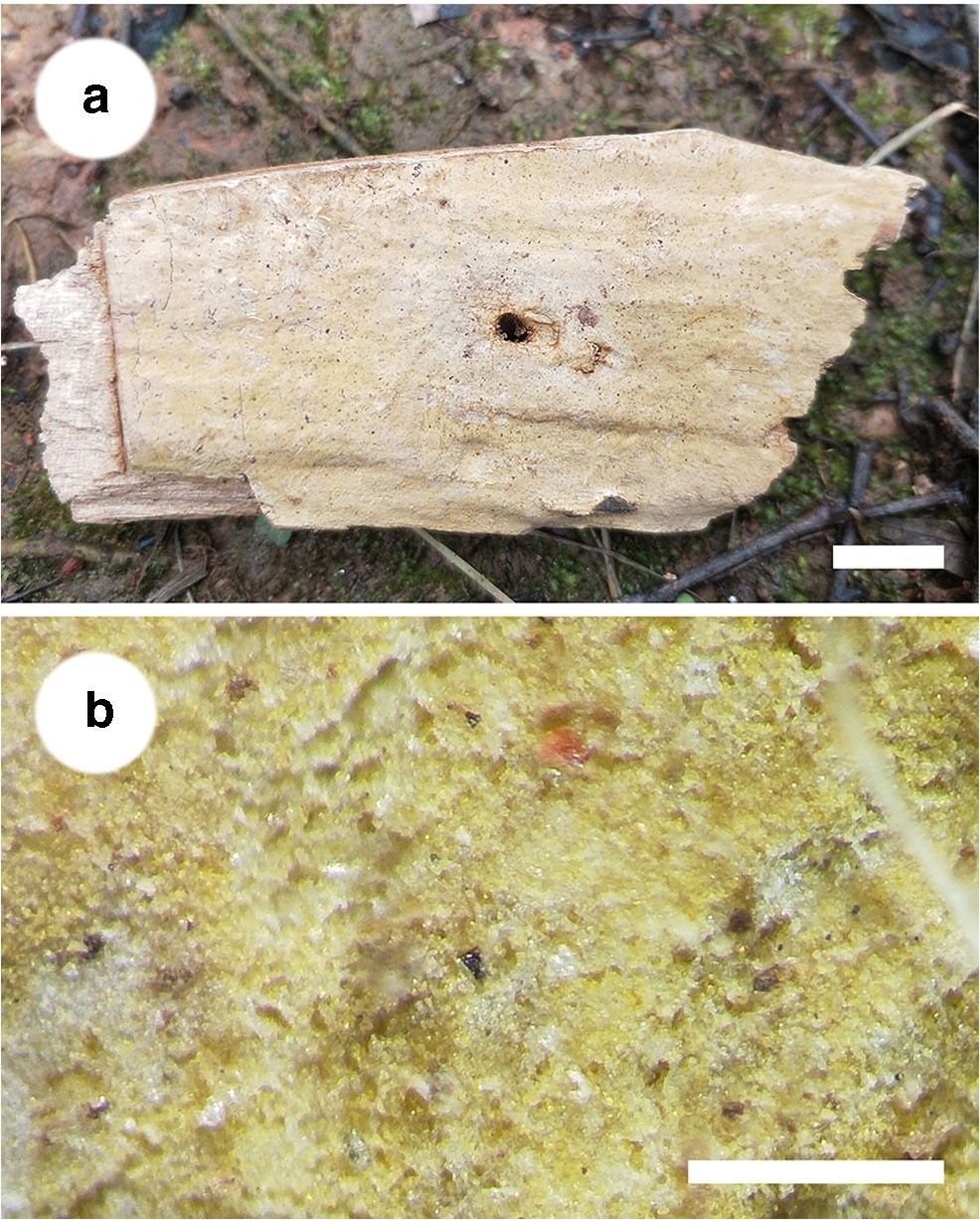
Basidioma of Phlebia tongxiniana (holotype). Scale bars: a =1 cm; b = 10 cm


